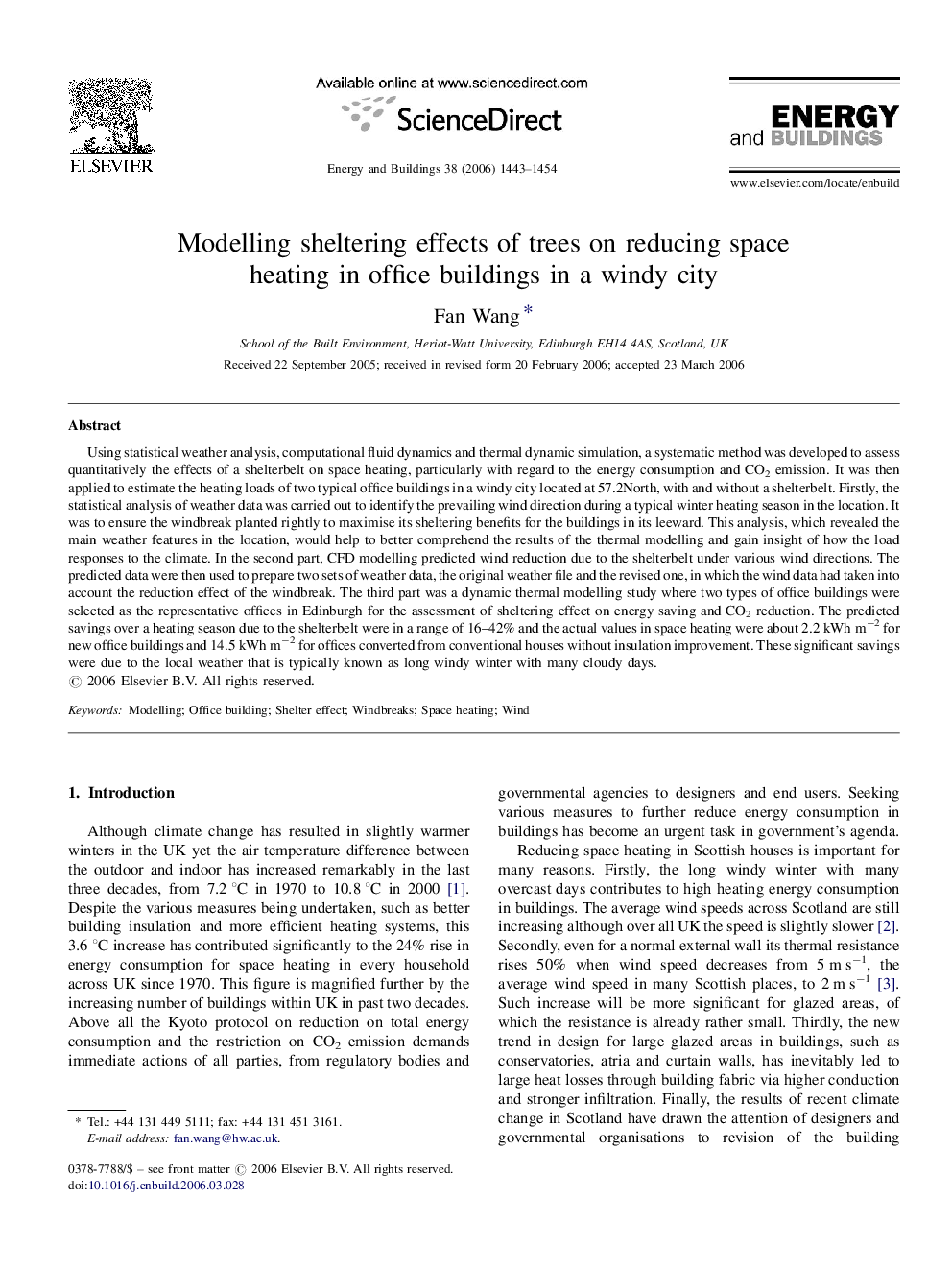| Article ID | Journal | Published Year | Pages | File Type |
|---|---|---|---|---|
| 265320 | Energy and Buildings | 2006 | 12 Pages |
Using statistical weather analysis, computational fluid dynamics and thermal dynamic simulation, a systematic method was developed to assess quantitatively the effects of a shelterbelt on space heating, particularly with regard to the energy consumption and CO2 emission. It was then applied to estimate the heating loads of two typical office buildings in a windy city located at 57.2North, with and without a shelterbelt. Firstly, the statistical analysis of weather data was carried out to identify the prevailing wind direction during a typical winter heating season in the location. It was to ensure the windbreak planted rightly to maximise its sheltering benefits for the buildings in its leeward. This analysis, which revealed the main weather features in the location, would help to better comprehend the results of the thermal modelling and gain insight of how the load responses to the climate. In the second part, CFD modelling predicted wind reduction due to the shelterbelt under various wind directions. The predicted data were then used to prepare two sets of weather data, the original weather file and the revised one, in which the wind data had taken into account the reduction effect of the windbreak. The third part was a dynamic thermal modelling study where two types of office buildings were selected as the representative offices in Edinburgh for the assessment of sheltering effect on energy saving and CO2 reduction. The predicted savings over a heating season due to the shelterbelt were in a range of 16–42% and the actual values in space heating were about 2.2 kWh m−2 for new office buildings and 14.5 kWh m−2 for offices converted from conventional houses without insulation improvement. These significant savings were due to the local weather that is typically known as long windy winter with many cloudy days.
